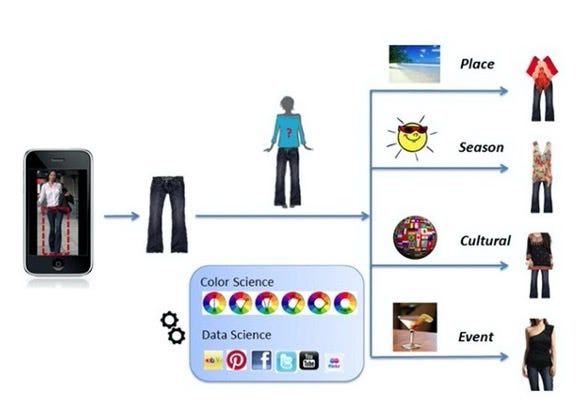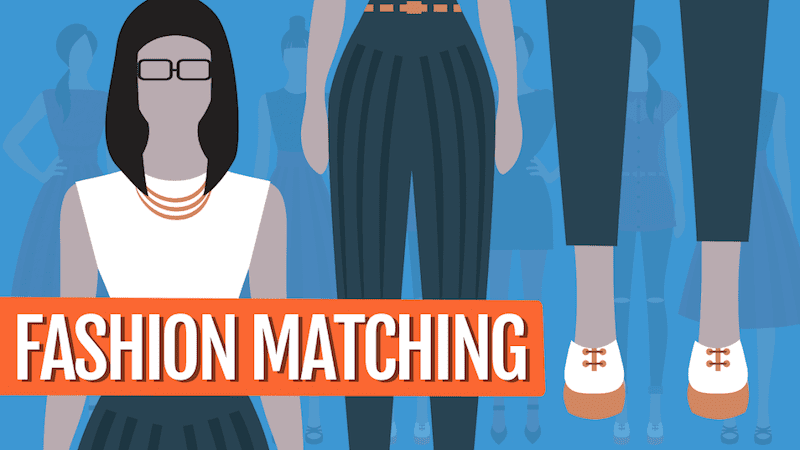Deep Learning for Personalized Fashion Recommendations
Fashion is a multi-billion dollar industry, and it is constantly evolving. Consumers are looking for new and innovative ways to stay ahead of the curve, and retailers are looking for ways to provide them with the products they want.
One way that retailers can achieve this is by using deep learning for personalized fashion recommendations. Deep learning is a type of machine learning that uses artificial neural networks to learn from data. This allows it to make predictions and recommendations that are tailored to individual users.

There are a number of ways that deep learning can be used for personalized fashion recommendations. One common approach is to use deep learning to analyze user data, such as purchase history, browsing history, and social media activity. This data can be used to build a profile of each user and their preferences.
Once a user profile has been created, deep learning can be used to generate personalized fashion recommendations. This can be done by using the user profile to search for products that are similar to those that they have previously purchased or viewed. Deep learning can also be used to generate recommendations based on the user's current location, the time of day, and other factors.
Deep learning for personalized fashion recommendations can provide a number of benefits for both retailers and consumers. For retailers, it can help to increase sales by providing customers with the products they want. It can also help to improve customer loyalty by providing a more personalized shopping experience.

For consumers, deep learning can help them to find the products they are looking for more easily. It can also help them to discover new products that they might not have otherwise found.
There are a number of challenges that need to be addressed in order to make deep learning for personalized fashion recommendations more effective. One challenge is the need for large amounts of data. Deep learning algorithms require a lot of data in order to learn and make accurate predictions. This can be a challenge for retailers who do not have access to large datasets.
Another challenge is the need for accurate data. The data used to train deep learning models needs to be accurate and up-to-date. If the data is inaccurate, the recommendations that are generated will be inaccurate. This can lead to customer dissatisfaction and lost sales.

Despite these challenges, deep learning for personalized fashion recommendations has the potential to revolutionize the way that fashion is sold. By providing retailers with the ability to provide customers with the products they want, deep learning can help to increase sales and improve customer loyalty.
How Does Deep Learning Work for Fashion Recommendations?
Deep learning works for fashion recommendations by using artificial neural networks to learn from data. Artificial neural networks are inspired by the human brain, and they can be used to solve a wide variety of problems, including image recognition, natural language processing, and speech recognition.

In the context of fashion recommendations, deep learning algorithms can be trained to learn the relationships between different types of clothing items. For example, a deep learning algorithm might be trained to learn that a pair of jeans is often worn with a t-shirt, or that a dress is often worn with heels.
Once a deep learning algorithm has been trained, it can be used to generate personalized fashion recommendations for individual users. This can be done by using the algorithm to analyze the user's purchase history, browsing history, and social media activity. The algorithm can then use this information to generate a list of products that the user is likely to be interested in.
Benefits of Deep Learning for Fashion Recommendations

There are a number of benefits to using deep learning for fashion recommendations. These benefits include:
- Increased accuracy: Deep learning algorithms can learn the relationships between different types of clothing items, and they can use this information to generate more accurate recommendations.
- Personalization: Deep learning algorithms can be trained to learn the individual preferences of each user. This allows them to generate recommendations that are tailored to the specific needs of each user.
- Scalability: Deep learning algorithms can be used to process large datasets of clothing items. This allows retailers to provide personalized recommendations to a large number of customers.
Challenges of Deep Learning for Fashion Recommendations

There are also a number of challenges to using deep learning for fashion recommendations. These challenges include:
- Data requirements: Deep learning algorithms require large datasets of clothing items in order to learn the relationships between different types of clothing items. This can be a challenge for retailers who do not have access to large datasets.
- Accuracy: Deep learning algorithms can be inaccurate if they are not trained properly. This can lead to customer dissatisfaction and lost sales.
- Bias: Deep learning algorithms can be biased if they are trained on data that is biased. This can lead to recommendations that are not fair or equitable.
Conclusion

Deep learning is a powerful tool that can be used to generate personalized fashion recommendations. However, there are a number of challenges that need to be addressed in order to make deep
Post a Comment